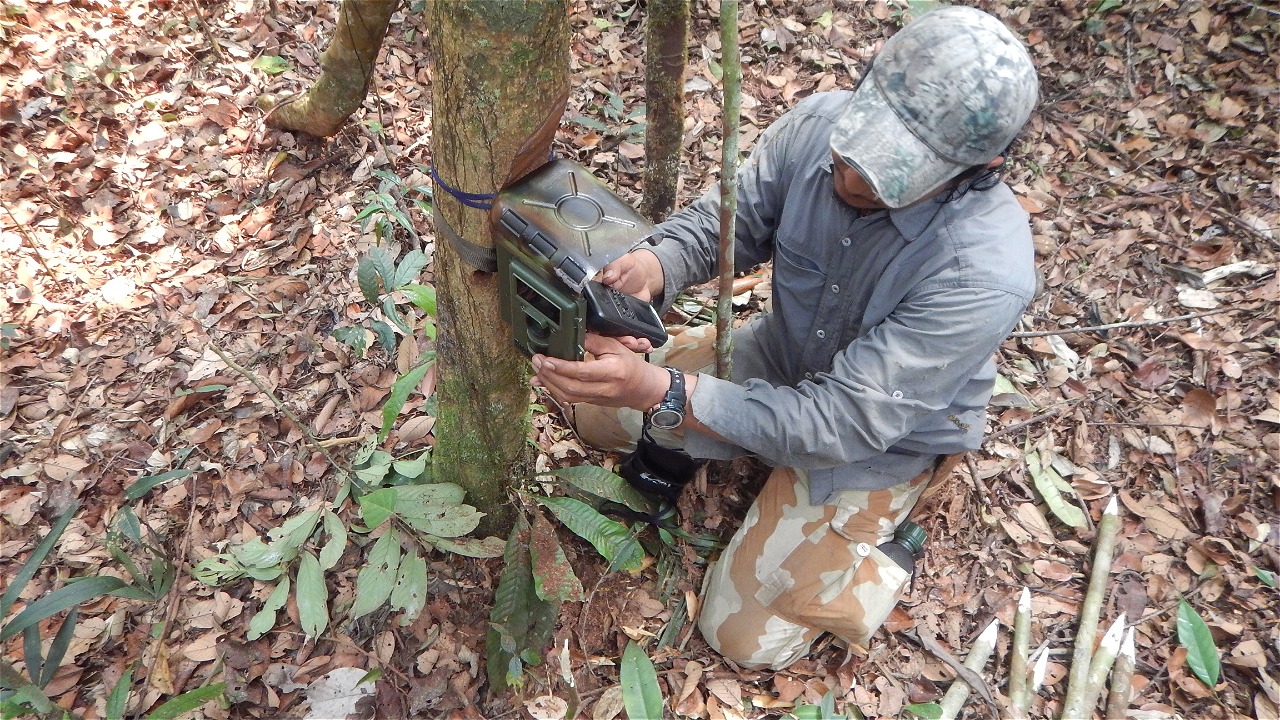CAMERA TRAP COMPETITION
Author: Tiger Team
Sumatra is one of the most biodiverse islands in Indonesia. It is home to 196 species of mammals, 22 of which are found on no other island in Indonesia (Rhee et al, 2004). The island is home to various species of large mammals such as the Sumatran Tiger (Panthera tigris sumatrae), Sumatran Elephant (Elephas maximus sumatranus), Sumatran Rhino (Dicerorhinus sumatrensis), Malayan Tapir (Tapirus indicus), and others.
Some of these animals are categorized as endangered, namely the Sumatran Tiger, Sumatran Elephant, and Sumatran Rhino. They are recorded as inhabiting several pockets of habitat that have experienced degradation and fragmentation. Sumatra faces various environmental problems such as large-scale degradation, fragmentation and loss of tiger habitat as well as poaching of tigers and their prey (Ministry of Forestry, 2007). In addition, other threats also plague these species such as poaching and so on.
Conservation efforts for these endangered species are targeted at monitoring and protection efforts both at the species level and in their habitats. One of the conservation efforts is monitoring the survival of these species using a scientific approach through direct or indirect observation. However, this process is not easy. This is because some of the target animals, especially endangered large mammals, are elusive, shy animals that are difficult to observe directly in nature. A non-invasive or non-harming approach to observation is one of the relevant approaches through the use of research tools, such as camera traps.
A camera trap or camera trap is an automated optical device capable of providing information, both visual and audio-visual. Wildlife such as carnivores in tropical rainforest areas such as Indonesia have several characteristics, such as body size, morphology, habitat for habitation, behavior and activity patterns. The difficulty of observation is high because they are generally shy and rarely encountered. In addition, very remote and inaccessible observation locations make long-term research, direct observation and fieldwork very expensive. For this reason, the use of camera traps as an observation tool is ideal.
Unfortunately, this device is a rare item and not an Indonesian domestic product. Hopefully, we are committed to involving and using local components. This initiative is expected to increase local competitiveness in relation to wildlife research in the international arena. Concretely, WWF-Indonesia invites several partners in realizing this. In addition, the impact of this activity is also expected to support broader conservation efforts, especially in Indonesia.
Urgency of the Activity
Indonesia is still far behind in the field of wildlife research even though the country is a destination for international researchers because of its biodiversity. Therefore, in order to raise the country's competitiveness, various developments and support are needed. One of the concrete efforts in this regard is to hold a competition for making camera traps.
Aim of the Activity
This activity has the main objective of increasing local competitiveness in the field of wildlife research in the international arena. This goal can be achieved through the following specific objectives:
- Organize a local innovation camera trapping competition
- Obtain the design and product of the local innovation camera trap design
- Publish the design and product of camera traps in various media with collaborators
Date of Implementation and Activity Details
The implementation of this activity includes several stages with a span of implementation between June and maximum on December 5, 2015. The series of implementation of this activity are as follows:
Winner's Judging and Incentive Value
The judges or selectors of the designs and products are from
WWF-Indonesia party
The total value of incentives for the winners of this competition is Rp 20,000,000.00 (twenty million rupiah) for two winners/institutions.
More information about this competition can be downloaded in the document FAQ Camera Trap Competition.





